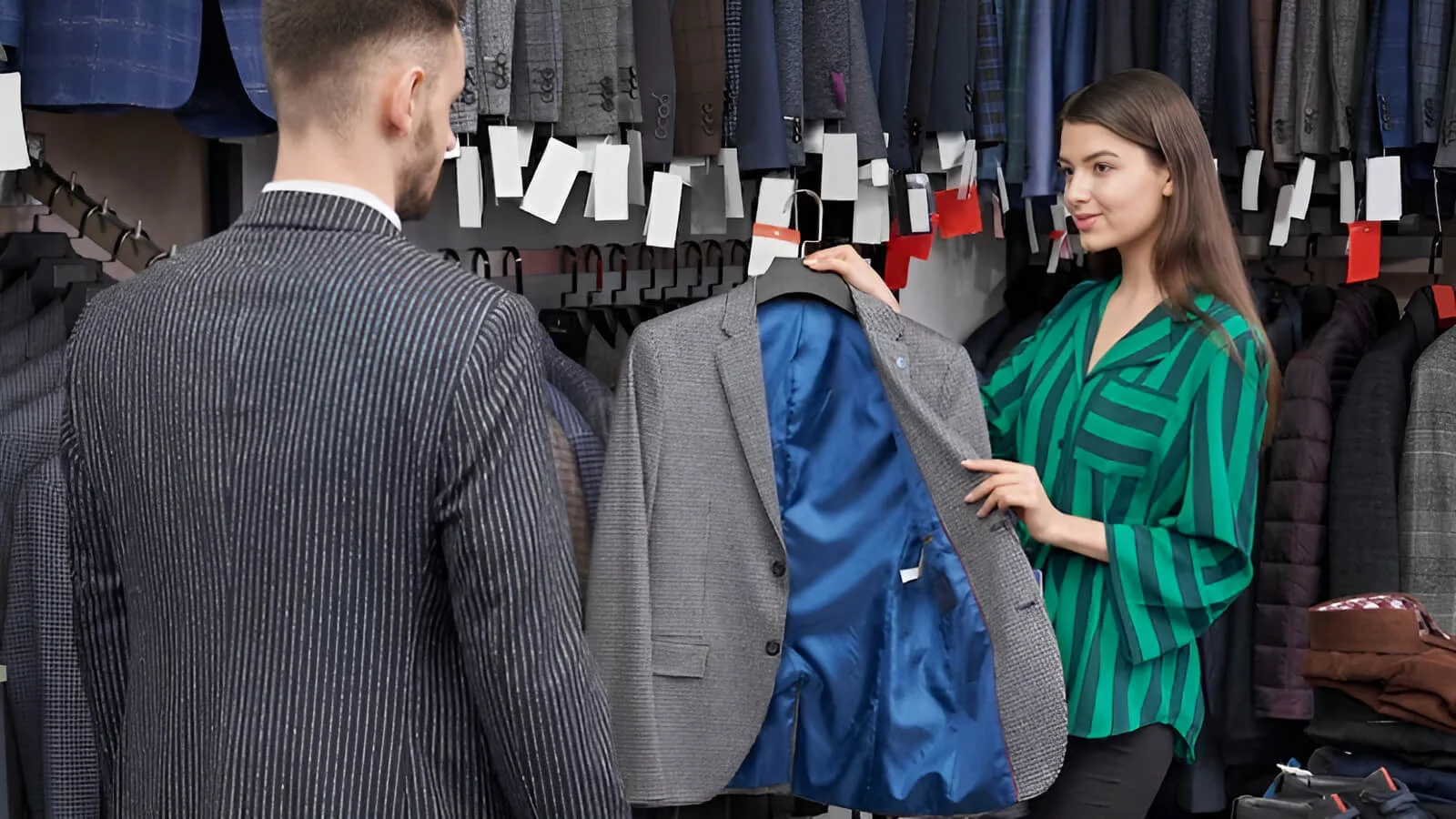What Is A Salesman Sample? Tiny Treasures Explained
Salesman samples were small, detailed models of products. Salespeople in the past used them to show customers what they were selling. This was especially useful for big or heavy items. These miniatures were key to making sales before we had modern technology like the internet. They helped people see and understand a product without seeing the real thing.
1. What is a salesman sample?
1.1 Simple definition
A salesman sample is like a tiny copy of a big product. Salespeople used these small copies to show customers what they were selling. It was much easier to carry a miniature stove or a small piece of furniture than the real, large item.
These sales tools were important to help demonstrate product features and make a sale. Think of it like a small toy version of a car that a car seller might show you. But these scaled-down sales versions were often much more detailed and made of real materials.

1.2 Why they were needed
Imagine a salesperson in the old days. They had to travel a lot, often by horse or train. How could they show someone a new kitchen stove or a big farming machine? Carrying the real, big product samples was either impossible or prohibitively difficult and expensive.
So, companies made these small, detailed salesman samples. Traveling salesmen could easily pack them in a case and take them everywhere. This meant they could visit many customers in different towns without needing a truck to carry big items.
If a company sold heavy iron stoves, the salesperson would carry a perfect little iron stove, small enough to sit on a table. These samples made it practical to sell large or heavy products to customers in distant locations.
2. The main job of a salesman sample
2.1 To show, not just tell
It’s one thing to tell someone about a product. It’s much better to show them. Salesman samples let customers see and often touch a small version of the product. They could see the shape, the color, and many details. Before samples, salespeople might only have simple drawings or just words. A sample was much more real.
This made it easier for the salesperson to explain how good the product was in their sales pitch. It was a powerful visual sales aid for product feature demonstration. For example, instead of just saying ‘our new sewing machine is well-made,’ the salesperson could show a miniature, detailed sewing machine.

2.2 Selling without the full-size item
Salesman samples were essential (hoặc “crucial”) for traveling salesmen. Think about selling huge farm equipment or very heavy factory machines. It was simply not feasible to bring such items to every customer’s door. With a detailed sample, the salesperson could still make the sale, even if the real product was miles away. This helped companies sell their products to more people, even in far-off places. It expanded their sales reach through effective product demonstration.
2.3 A window into quality and craftsmanship
Many salesman samples were made with the exact same materials as the big product. If it was a wooden chair, the sample was real wood. If it was a metal tool, the sample was real metal. This was very important. Customers could feel the quality of the wood, see the shine of the metal, or touch the real fabric.
This fidelity to the original material quality was key. Seeing a well-made sample with good craftsmanship helped customers trust that the full-sized product would also be good. It showed the company cared about making good things. This built customer trust and made people more confident to buy.
2.4 Historical context
Remember, salesman samples were most popular a long time ago, mostly from the late 1800s to the middle of the 1900s. This was a key part of the history and evolution of salesman samples. This was before everyone had computers, the internet, or even good color photos in magazines.
Color printing was expensive and not always very good. So, for many years, these physical samples were one of the best ways to show a product. Most selling happened in person. The sample was the main pre-digital sales aid in that bygone commerce era, especially for Victorian salesman samples and early 20th century sales.
3. What did salesman samples actually look like?
3.1 Size and scale
Salesman samples were much, much smaller than the real products they showed. Often, they were made to a specific ‘scale.’ This means they were a set fraction of the real product’s size. For example, a scale model might be 1/6th (one-sixth) or 1/8th (one-eighth) the size of the full thing.
Making them to scale was important because it kept the miniature proportion right, creating an accurate scaled representation. So, if a chair had long legs and a short back in real life, the scaled-down sample chair would also look just like a shrunken version. The main idea was to make these portable samples small enough to fit in a carrying case.

3.2 Materials
The best salesman samples tried to be very real. Many were made using the exact same materials as the full-sized products. So, a sample of a wooden dresser might be made from real oak, just like the big one. This is a key aspect when identifying antique salesman samples characteristics.
Customers could see and feel the true quality, like actual production fabric or real metal. This material accuracy was vital for authentic miniatures. Sometimes, if a material was very hard to work with in a tiny size, a representative material might be used.
But the goal was always to be as close to the real thing as possible. This emphasis on authentic materials highlights a timeless sales principle: the power of the tactile experience. Just as historical customers could feel the quality of a miniature, modern consumers connect with high-quality presentation.
This principle is still alive today in branding, where the choice of material for something as simple as a clothing tag can convey a powerful message about a product’s quality.
3.3 Detail and accuracy
Salesman samples weren’t just roughly shaped blocks. Many were incredibly detailed product replicas. They tried to copy every important feature of the big product, very accurately. Think of tiny hinges that worked, small drawers that opened, or miniature logos.
The level of exceptional craftsmanship in these detailed miniatures was often amazing. Many accurate scale models were like beautiful little works of art. This high detail also sent a strong message: if the company put this much care into a small sample, their full-sized products must be excellent too.
3.4 Functionality: Some could even work!
It might surprise you, but some salesman samples weren’t just for looking at – they could actually work, at least in a small way! These functional miniatures and working scale models were great for product feature demonstration.
- A miniature washing machine might have a tiny part inside that turned.
- A sample of a stove could have oven doors that opened and closed.
- A small version of a farm plow might have wheels that spun. This working functionality made the salesperson’s demonstration even more powerful.
4. A world of miniatures
Salesman samples weren’t just for one or two types of products. Companies made them for a huge variety of things! Here are some common examples of salesman samples and types of miniature replicas:
- Furniture salesman samples: Tiny chairs, sofas, tables, dressers, and cabinets. Often made from real wood with tiny upholstered parts.
- Appliances: Miniature stoves, sewing machines, iceboxes, washing machines, and carpet sweepers.
- Tools and equipment: Small-scale farm plows, anvils, wrenches, and parts of larger machinery. Often made from metal.
- Garment salesman samples & accessories: Single sample shoes, sample hats, and bolts of fabric showing different patterns.
- Architectural elements: Miniature window frames, sample doors, small sections of roofing material, and sample bricks.
- And many more: You could also find samples of musical instruments, caskets, salesman sample lightning rods, and even miniature versions of food packaging.

5. Salesman sample vs. toys vs. prototypes
5.1 Salesman samples vs. toys/dollhouse furniture
It’s important to distinguish salesman samples from toys. The biggest difference is why they were made. Salesman samples were serious business tools. Toys and dollhouse furniture are for play.
Generally, salesman samples had better quality materials and more detail. They often used real materials. Toys might use cheaper materials. While an old salesman sample vs miniature toy might look similar now, their original jobs were very different.
Here’s a quick comparison:
| Feature | Salesman Sample | Toy / Dollhouse Furniture |
|---|---|---|
| Main Purpose | To sell a full-sized product | For play, entertainment |
| Quality | Often high, detailed, accurate | Varies, often simpler |
| Materials | Often real materials from original | Often cheaper, representative |
| Audience | Adult customers, businesses | Children |
5.2 Salesman samples vs. prototypes
A prototype is like a first try of a new product. Companies make prototypes to test ideas. Prototypes might be rough and are not usually for customers. A salesman sample is different. It’s a polished product development model made after the design is mostly finished.
Its job is to show customers what the final product will look like. So, a company might make prototypes, then create a beautiful salesman sample to sell the product. Understanding salesman sample versus full prototype differences is key.

6. Why salesman samples worked so well?
Effective samples had a big impact on sales for several key reasons:
- Made products tangible: They let customers see and touch a version of the product. This product visualization made the product feel more real.
- Highly engaging: The small size, amazing detail, and often the novelty, really caught people’s attention. These were great customer engagement tools.
- Built trust: Showing good quality in a small sample helped customers believe the company made reliable full-sized products.
- Helped sales: Samples made it easier for customers to imagine the real product in their own home or business, boosting sales conversions.

7. Why traditional salesman samples became less common?
The history and evolution of salesman samples shows they became less common due to several factors:
- Better printing: Good quality, color printing became cheaper. Companies could make detailed catalogs.
- Photography and video: It became easier to use good photographs, and later, videos.
- The internet: Websites and online stores allowed companies to show products with many photos, videos, and 3D models. These modern sales tools changed everything.
- Cost to make samples: Making detailed miniature salesman samples was often very expensive. This contributed to the decline of traditional sales methods.

8. Salesman samples today
8.1 Collectible treasures
Today, old salesman samples are not usually used for selling. Instead, many have become valuable antique versions. People who collect antiques love salesman samples. They tell a story about the past, show amazing craftsmanship, and many are quite rare.
The trade samples value can depend on age, condition, rarity, and product type. Some rare salesman samples are highly sought after by those collecting antique miniatures. You might find them in antique stores or at special auctions.
8.2 Lessons for modern product presentation
Even with digital tools, we can learn from old salesman samples. The main idea – showing something real, well-made, and letting people experience your product’s quality – is still powerful. This is key for modern product sampling and effective sales presentations. Think about when a company gives you a beautifully packaged sample today. It makes a strong impression.

9. Quick answers: Frequently asked questions (FAQs)
9.1 What’s the main difference between a salesman sample and a dollhouse miniature?
The main job. Salesman samples were business tools to sell big products, often made with real, high-quality materials. Dollhouse miniatures are toys for play and usually simpler. (See: salesman sample vs miniature)
9.2 Are all salesman samples very old?
Most traditional antique salesman samples are old, from the late 1800s to mid-1900s. But the idea of using small samples is still used today in new ways.
9.3 Were salesman samples expensive to make?
Yes, often they were. They needed to be detailed and accurate, which cost a lot.
9.4 Can I still find salesman samples today?
Yes! They are usually sold as antiques or collectibles in antique shops, at auctions, or online.
Explore more:
Salesman samples were small, but they played a big part in the history of selling. They were clever marketing materials that helped businesses show off their products. Even with websites and videos today, the basic idea is still important: showing your product’s quality in a clear and exciting way really works. This affects brand impression and shows the product presentation value.
The amazing care that went into old salesman samples is a great reminder. When you present something well – a product, a sample, or your packaging – it shows you care. At Packlove, we believe helping your products look their best is always a smart idea, just like those tiny, impressive salesman samples from long ago.






















